Research at LNI
Luria Neuroscience Institute supports research into a wide range of topics through an extensive network of international collaborations. These include:
Project AGI – Building an Artificial General Intelligence
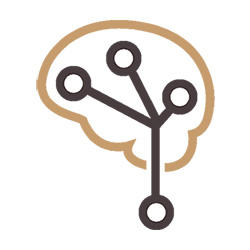 A collaborative project between Elkhonon Goldberg of Luria Neuroscience Institute, and Gideon Kowadlo and David Rawlinson of Project AGI is underway, developing biologically inspired computational models of general intelligence.
A collaborative project between Elkhonon Goldberg of Luria Neuroscience Institute, and Gideon Kowadlo and David Rawlinson of Project AGI is underway, developing biologically inspired computational models of general intelligence.
You can find more about Project AGI at agi.io
Structural and functional differences between the two cerebral hemispheres
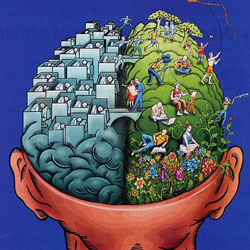 The two cerebral hemispheres are not a mirror image of each other. Significant morphological differences between them exist. In collaboration with NYU Langone Medical Center neuroscientists, we used magnetic resonance imaging (MRI) voxel morphometry methods to further characterize these differences and to relate them to the functional differences between the two hemispheres in normal and abnormal cognition.
The two cerebral hemispheres are not a mirror image of each other. Significant morphological differences between them exist. In collaboration with NYU Langone Medical Center neuroscientists, we used magnetic resonance imaging (MRI) voxel morphometry methods to further characterize these differences and to relate them to the functional differences between the two hemispheres in normal and abnormal cognition.
Cortical gene expression in the frontal lobes in neurological and neuropsychiatric disorders
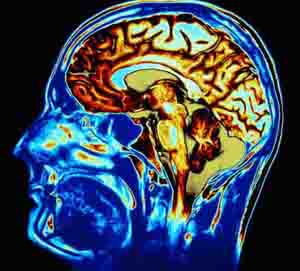 Frontal-lobe dysfunction has been implicated in anumber of neurological and neuropsychiatric disorders.Frontal-lobe vulnerability across a wide range of such disordersmay be due to aberrant gene expression in the frontal lobes. LNI has developed collaboration with neuroscientists at Cornell Medical School, NYU School of Medicine, and University of Gdansk, Poland to study patterns of cortical gene expression in the frontal lobes and their relationship to schizophrenia, Fronto-temporal dementia, and other conditions. We are particularly interested in asymmetric patterns of aberrant gene expression as a possible causal mechanism ofseveral neurological and neuropsychiatric disorders.
Frontal-lobe dysfunction has been implicated in anumber of neurological and neuropsychiatric disorders.Frontal-lobe vulnerability across a wide range of such disordersmay be due to aberrant gene expression in the frontal lobes. LNI has developed collaboration with neuroscientists at Cornell Medical School, NYU School of Medicine, and University of Gdansk, Poland to study patterns of cortical gene expression in the frontal lobes and their relationship to schizophrenia, Fronto-temporal dementia, and other conditions. We are particularly interested in asymmetric patterns of aberrant gene expression as a possible causal mechanism ofseveral neurological and neuropsychiatric disorders.
Tourette’s syndrome and Attention Deficit Hyperactivity Disorder
 It has been suggested that Tourette’s syndrome (TS) and ADHD are often co-morbid. But what is the true relationship between these conditions. LNI has developed a collaboration with neuropsychologists in Oslo, Norway to study this relationship and to develop novel ways of identifying and characterizing different variants of TS.
It has been suggested that Tourette’s syndrome (TS) and ADHD are often co-morbid. But what is the true relationship between these conditions. LNI has developed a collaboration with neuropsychologists in Oslo, Norway to study this relationship and to develop novel ways of identifying and characterizing different variants of TS.
Patterns of cognitive impairment in Parkinson’s disease (PD)
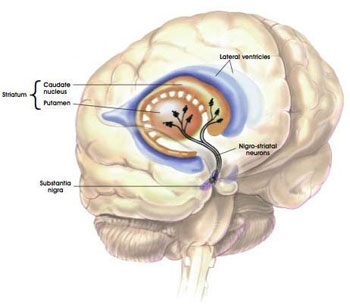 Parkinson’s disease(PD) is more than a movement disorder. Cognitive functions are also often affected. It is important to better understand and more precisely characterized the nature, extent, and subtypes of cognitive impairment in PD.Most cases of PD are asymmetric, resulting in left or right hemiparkinsonian syndromes. Are such asymmetric “hemiparkinsonian” profiles of motor impairment associated with different profiles of cognitive impairment? LNI has developed a collaboration with neuroscientists at University of Chieti, Italy, to study the cognitive profiles of left vs. right hemiparkinsonian syndromes using innovative cognitive paradigms.
Parkinson’s disease(PD) is more than a movement disorder. Cognitive functions are also often affected. It is important to better understand and more precisely characterized the nature, extent, and subtypes of cognitive impairment in PD.Most cases of PD are asymmetric, resulting in left or right hemiparkinsonian syndromes. Are such asymmetric “hemiparkinsonian” profiles of motor impairment associated with different profiles of cognitive impairment? LNI has developed a collaboration with neuroscientists at University of Chieti, Italy, to study the cognitive profiles of left vs. right hemiparkinsonian syndromes using innovative cognitive paradigms.
Lateralization of frontal-lobe functions
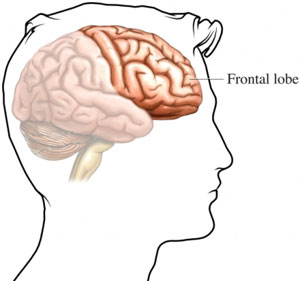 The frontal lobes of the brain are implicated in most complex aspects of cognition and metacognition – in the so-called “executive functions.” The two frontal lobes are characterized by morphological, cytoarchitectonic, and biochemical differences. Yet the functional differences between the two frontal lobes are poorly understood. LNI has developed collaborations with neuroscientists at University of Tartu, Estonia and University of Chieti, Italy to study these differences using rTMS, fMRI, EEG, and innovative cognitive paradigms. Advancing our understanding of the functional differences and lateral asymmetries in the frontal lobes will have implications both for the fundamental aspects of cognitive neuroscience and for the understanding a number of neuropsychiatric and neurological disorders.
The frontal lobes of the brain are implicated in most complex aspects of cognition and metacognition – in the so-called “executive functions.” The two frontal lobes are characterized by morphological, cytoarchitectonic, and biochemical differences. Yet the functional differences between the two frontal lobes are poorly understood. LNI has developed collaborations with neuroscientists at University of Tartu, Estonia and University of Chieti, Italy to study these differences using rTMS, fMRI, EEG, and innovative cognitive paradigms. Advancing our understanding of the functional differences and lateral asymmetries in the frontal lobes will have implications both for the fundamental aspects of cognitive neuroscience and for the understanding a number of neuropsychiatric and neurological disorders.






